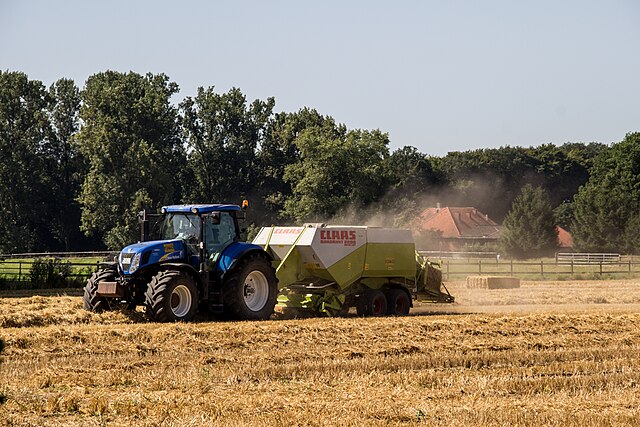Mechanised agriculture or agricultural mechanization is the use of machinery and equipment, ranging from simple and basic hand tools to more sophisticated, motorized equipment and machinery, to perform agricultural operations. In modern times, powered machinery has replaced many farm task formerly carried out by manual labour or by working animals such as oxen, horses and mules.
A cotton picker at work. The first successful models were introduced in the mid-1940s and each could do the work of 50 hand pickers.
A reaper at Woolbrook, New South Wales
Threshing machine in 1881. Steam engines were also used to power threshing machines. Today both reaping and threshing are done with a combine harvester.
A tractor towing a baler makes hay bales in a field in Germany.
Agriculture began independently in different parts of the globe, and included a diverse range of taxa. At least eleven separate regions of the Old and New World were involved as independent centers of origin.
The development of agriculture about 12,000 years ago changed the way humans lived. They switched from nomadic hunter-gatherer lifestyles to permanent settlements and farming.
Ploughing with a yoke of horned cattle in Ancient Egypt. Painting from the burial chamber of Sennedjem, c. 1200 BC.
Indigenous Australian camp by Skinner Prout, 1876
Sumerian harvester's sickle, 3000 BC, made from baked clay
An Indian farmer with a rock-weighted scratch plough pulled by two oxen. Similar ploughs were used throughout antiquity.








